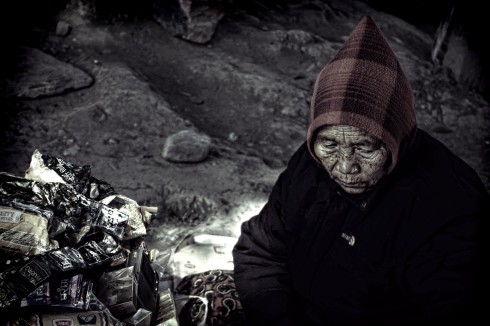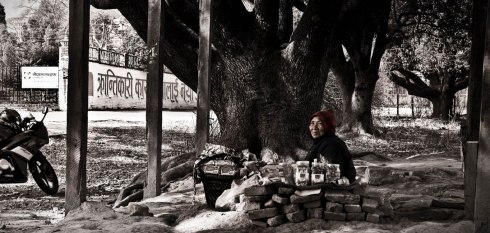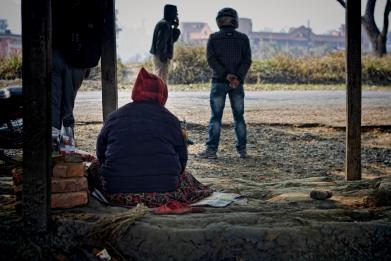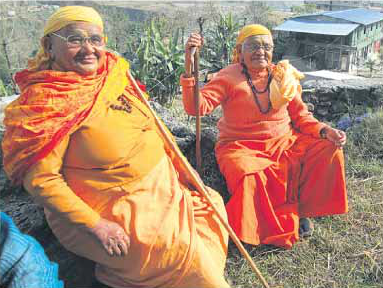You are currently browsing the category archive for the ‘Active Ageing’ category.
“Excuse me, is that yours?” An elderly voice struck my ears when I was waiting for a coach to return to London from Ramsgate, a coastal town. I turned towards the voice and saw an old woman, probably in her late 70s. She was pointing to a soft drink can next to me. It wasn’t mine. I hadn’t even noticed it in my anxiety that I might miss the bus. So I said no. She then picked up the can and walked away slowly. I was puzzled why she was taking that empty can. I saw her white head and tiny structure moving slowly towards the waste bin around the corner. She dropped the can in the bin and went on her way. Wow! I was amazed to see an elderly lady doing this. What an inspiring thing for everybody! I looked at myself and felt ashamed. It was a really hard punch for me who was just sitting on the bench comfortably without bothering about it. It was a great slap for the one who had left it there. The old lady who is not strong enough to carry away her own trash is here taking care of other people’s garbage. And a young person like me is loitering around doing nothing about it. Is it love for her place? Is it her awareness of clean surroundings? Maybe both. This grandmotherly lady’s act is really an inspiration for me who comes from a country where we throw our garbage out the window without any feeling of guilt.
We boastfully spit in public places without any shame. We throw our trash through bus windows. Keeping our own house clean is everything for us. We bathe, put on clean dresses and clean our house daily, but very comfortably we throw our garbage anywhere. In contrast to our behavior, people from the developed countries not only think of their houses but also of their surroundings. They are ashamed to throw even chocolate wrappings or sandwich boxes on the road. They feel uncivilized to spit in public places. That’s why their country is clean. But in our country, how many of us throw our waste in the proper places? If we want a clean environment, who will come and clean it for us if we don’t do it ourselves? If we think that our government or some organization will do it for us, it’s just a sweet dream. Waiting for this sweet dream to come true, we have already spent decades amid stinking surroundings and piles of garbage in the centers of our cities. Photographers have earned a lot of money taking pictures of the rubbish and selling them to the media. Let’s stop giving them such opportunities. Let’s start removing our waste ourselves. If an old lady can do it, why can’t we?
Source: The Kathmandu Post (November 22, 2013)
Compiled by: Janu Rai
Kathmandu, October 10
World Mental Health Day was celebrated with the slogan ‘Mental health and senior citizens’ across the country today.
On the occasion, Nepal Mental Health Network organised awareness campaigns, rallies and free health camp. GopalDhakal, General Secretary of Nepal Psychologist Association said, “We focused on senior citizens this year.”
He further said, “A health camp was conducted for senior citizens at Pashupati Old Age Home. Most of them were found suffering from memory disorders and depression. Their self-esteem was very low. They were counselled and provided psychotherapy.”
A free health camp was also organised in Pashupati area and Kirtipur. Eighty persons benefited from the free health camp in pashupati and forty in Kritipur. Most of them were long term anxiety and depression patients. He further said, “There hasn’t been much progress in the field of psychiatric medication in Nepal. The policies developed are not implemented yet.”
Mental problem is a big challenge worldwide. According to World Health Organization, 450 million people are suffering from mental disorders. In Nepal, more than 5 million people are suffering from some or the other mental condition and out of five mental condition, only one has access to treatment.
Source: The Himalayan Times (11th October, 2013)
Compiled by: Suman Thapa
June 15th, 2013, World Elder Abuse Awareness Day (WEAAD).
A Charity Party and the premier of the documentary by Reaping Hope, ‘Youth for Old’; was arranged by R.H on the occasion of WEAAD. The short 10 minute documentary film covers the issues of the ageing population and the situation of senior citizens in Nepal. The program started with the premier of the documentary followed by a Dance party and the video was repeated along the screen in the venue throughout the night.
Purple colored lights were used to mark the WEAAD during the party.

Thank you Stefan Heintjes and Dominiquee for helping us out in the WEAAD program and not forgetting Dj Niroj and Dj Raw-Neat for volunteering as the Dj s and Himalayan Pizza for providing us with the venue.
Thank you everyone who attended and made the party worthwhile.We will update the names of the sponsors of the documentary during the release of the documentary online. Keep tuned for updates.
Visit Facebook Page for more photos.



MANOJ ADHIKARI
POKHARA: Over 50 elderly living in a shelter home in Pokhara have been left to fend for themselves after the government stopped providing financial support.
According to Basanta Keshav Parajuli, chairman of the Pokhara Elderly Home, the old people living in the elderly home have been organizing bhajans and kirtans to raise funds for their daily needs.
The elderly home, located at Pokhara-16 Sitapaila, has been running for 16 years and has currently been housing 50 elderly people. According to the elderly home, the monthly expenses for the elderly people living in the shelter home comes to around Rs 70,000.
“The elderly people are organizing bhajans and kirtans to collect funds for running the shelter home,” said Parajuli. He said the elderly have collected Rs 500,000 over the last three months.
The shelter home has also employed seven persons to take care of the elderly.
“A donor has built a medical facility at the cost of Rs 1 million in the shelter home. But government has not even bothered to provide us a health worker for the treatment of the elderly,” said Parajuli.
Mina Karmacharya, 71, of Lalitpur donated three ropanis of land worth over six million rupees in Lekhnath municipalty-11, to the elderly home recently.
source: Republica, December 24, 2012

This is the November, 2012 issue of Standing Against Elder Abuse produced by Reaping Hope. Please find the e-newsletter by clicking the above picture or follow the link http://mad.ly/b22b33

















